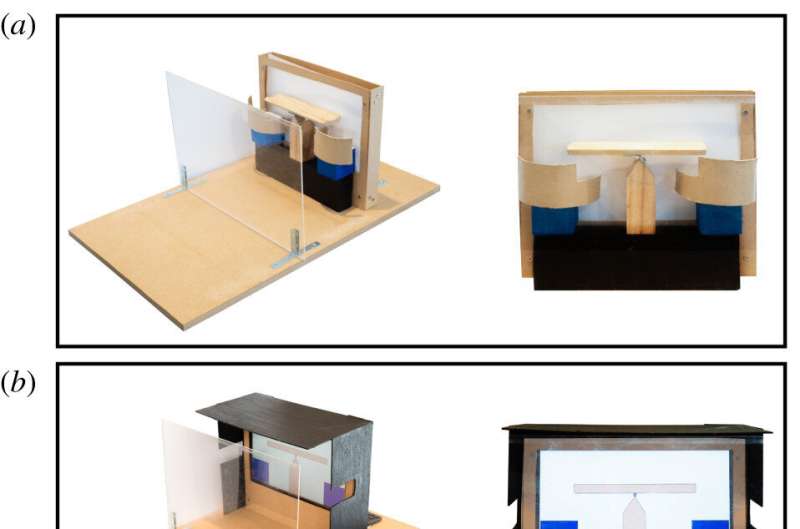September 29, 2021 report
New Zealand parrot is smart enough to use touchscreen but cannot distinguish between real and virtual worlds

A trio of researchers at the University of Auckland has found that the New Zealand parrot is smart enough to use a touchscreen but not smart enough to understand the difference between virtual and real imagery. In their paper published in the journal Biology Letters, Amalia Bastos, Patrick Wood and Alex Taylor, describe different experiments they conducted with the endangered birds.
New Zealand parrots are well known in New Zealand for their intelligence and inquisitiveness. They have been known to swipe windshield wipers off of cars, for example, or to rummage in a tourist's luggage and steal their passport. Sadly, they are endangered due to ingestion of lead from human sources and from other interactions with humans, such as wandering in traffic. In this new effort, the researchers wondered if the birds were able to tell the difference between what they see in real life and imagery depicted on a computer screen. To find out, they conducted experiments with several of the birds housed at the Willowbank Wildlife Reserve in Christchurch.
The experiments began by teaching several of the birds to manipulate objects on a computer screen using their tongues. Their beaks are made of keratin, which is not electrically conductive; thus, they cannot activate a touchscreen. Next, they tested the birds on their ability to understand a simple game—they placed a ball on a table and then tilted the table one way or the other, allowing the ball to drop into a box on either side of the table. They then challenged the bird to identify which box held the ball. The birds mastered the game quickly and easily.
The researchers then replicated the experiment virtually on a computer screen. Again, the birds were able to choose the correct box with ease. But when the researchers used a virtual table and virtual ball with real boxes on either side of the computer, the birds became confused—they clearly expected the virtual ball to drop from the virtual table into a real box. The researchers noted that similar studies conducted with infants show that no matter their age, humans are able to tell the difference between what is real and what is virtual.
More information: Amalia P. M. Bastos et al, Are parrots naive realists? Kea behave as if the real and virtual worlds are continuous, Biology Letters (2021). DOI: 10.1098/rsbl.2021.0298
Journal information: Biology Letters
© 2021 Science X Network





















